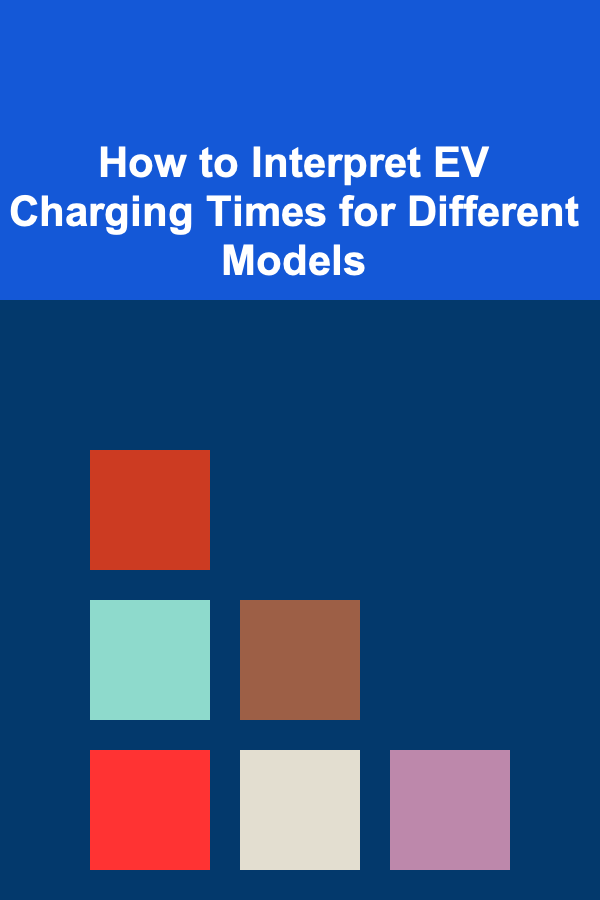
How to Identify Juxtaposition in Film
ebook include PDF & Audio bundle (Micro Guide)
$12.99$8.99
Limited Time Offer! Order within the next:

Juxtaposition in film is a powerful narrative tool that filmmakers use to create meaning, build contrast, and provoke thought. The technique involves placing two or more elements side by side to highlight their differences or to reveal a deeper connection between them. These elements can range from characters and settings to visual motifs and themes. When done effectively, juxtaposition can transform a simple scene into a complex, emotionally resonant moment that engages the audience in ways that a straightforward narrative cannot.
Understanding how to identify juxtaposition in film requires an exploration of the various forms it can take, the reasons filmmakers use it, and the impact it has on the viewer. This article will delve into the different ways juxtaposition manifests in film, examining specific examples and offering insights into its broader significance in cinematic storytelling.
What is Juxtaposition?
Juxtaposition, by definition, is the act of placing two or more things side by side in order to compare, contrast, or highlight differences. In the realm of filmmaking, juxtaposition is often used to create visual contrasts, build thematic resonance, or heighten emotional impact. The elements that are juxtaposed can be visual, auditory, or thematic, and the effect is often to create a layered narrative that is more complex than what is immediately apparent.
Filmmakers use juxtaposition to guide the audience's understanding of the relationships between different elements of the story. It can emphasize contradictions within the characters, settings, or events, ultimately challenging the viewer to question what they see and feel. Juxtaposition can also be subtle or overt, depending on the intent of the filmmaker and the tone of the film.
Types of Juxtaposition in Film
1. Visual Juxtaposition
Visual juxtaposition involves placing contrasting images within the same frame or scene to create a specific visual effect. This is one of the most common uses of juxtaposition in film, as filmmakers can manipulate the mise-en-scène to craft a visual narrative.
For example, in Francis Ford Coppola's "The Godfather", the juxtaposition between light and dark is used to underscore the moral complexities of the characters. Don Vito Corleone, the film's central character, is often framed in shadow, symbolizing his hidden, morally ambiguous nature. In contrast, his son Michael Corleone is depicted in lighter, more open spaces early in the film, suggesting his initial innocence. As Michael transitions into the world of crime, the visual juxtaposition shifts, with more shadows enveloping him as he embraces the family's violent legacy.
In this case, the juxtaposition of light and dark not only highlights the characters' internal struggles but also emphasizes the broader theme of moral corruption. The viewer's subconscious understanding of visual contrast adds a layer of depth to the storytelling, making the transformation of Michael Corleone more impactful.
2. Character Juxtaposition
Character juxtaposition is another key form of contrast used in films. This involves placing characters with opposing traits or ideologies in the same narrative framework. These characters might not interact directly but are still part of the same thematic universe. The stark contrast between them can amplify the tension and complexity of the film.
A prime example of character juxtaposition can be found in Martin Scorsese's "Taxi Driver". The protagonist, Travis Bickle, is a mentally disturbed war veteran who becomes increasingly disillusioned with the state of society. His disillusionment and growing paranoia are contrasted with the character of Iris, a young prostitute who represents the innocence Travis believes he is saving. Their contrasting personalities and life situations highlight the moral ambiguity of Travis's actions and the larger social commentary of the film.
In this case, character juxtaposition not only enhances the psychological depth of Travis Bickle but also invites the audience to question the ethics of his actions. The contrast between these two characters emphasizes the film's central themes of alienation, societal decay, and the blurry line between heroism and villainy.
3. Thematic Juxtaposition
Thematic juxtaposition occurs when contrasting themes or ideas are placed side by side to create a deeper commentary on the narrative. This form of juxtaposition can help highlight the tension between opposing forces, such as good and evil, innocence and corruption, or freedom and oppression.
An exemplary use of thematic juxtaposition is found in Christopher Nolan's "The Dark Knight". The film juxtaposes the chaotic, anarchic philosophy of the Joker with the order-driven mindset of Batman. The Joker seeks to destabilize Gotham and expose the fragility of social norms, while Batman, though equally capable of violence, strives to maintain justice within a moral framework. The two characters' contrasting ideologies drive the film's central conflict and explore deeper themes of morality, law, and chaos.
Through this thematic juxtaposition, Nolan asks the viewer to consider the implications of each philosophy, leaving them to grapple with the question of whether a world without order is any less dangerous than one ruled by a rigid, moral code. The thematic tension between Batman and the Joker is not just about the clash of their physical strengths but the philosophical and ethical chasm between them.
4. Temporal Juxtaposition
Temporal juxtaposition is a technique where filmmakers contrast events that occur at different times in the story, often using flashbacks or flash-forwards to reveal contrasts in characters' past and present lives. This technique allows filmmakers to draw connections between events that seem unrelated, adding complexity to the narrative.
An excellent example of temporal juxtaposition can be seen in Quentin Tarantino's "Pulp Fiction", which tells its story in a non-linear fashion. The film weaves together different time periods and storylines, creating a disjointed yet cohesive narrative. By juxtaposing various events---such as the opening diner robbery and the closing sequence with Vincent Vega and Jules Winnfield---the film encourages the audience to consider how these events shape the characters' fates and how the past influences the present.
In this case, temporal juxtaposition not only keeps the audience engaged but also invites reflection on the cyclical nature of life and the choices that individuals make. The fractured timeline mirrors the unpredictability and chaos of the characters' lives, enhancing the film's themes of fate and redemption.
5. Sound Juxtaposition
Sound juxtaposition involves the contrast of different sounds or music to emphasize thematic elements or create emotional impact. Filmmakers use sound to amplify the visuals and the story, sometimes creating a stark contrast between the audio and the on-screen action to disorient or provoke the viewer.
A memorable use of sound juxtaposition can be found in Stanley Kubrick's "A Clockwork Orange", where classical music is often juxtaposed with violent, disturbing imagery. For example, the character Alex's love for Beethoven's 9th Symphony contrasts sharply with the brutality of his actions, creating a dissonance that heightens the emotional intensity of the scenes. The juxtaposition of sweet, melodic music with horrific violence underscores the film's exploration of free will, control, and moral corruption.
Through the use of sound juxtaposition, Kubrick forces the audience to confront the dissonance between Alex's inner world---represented by the classical music---and his outward behavior, creating a powerful commentary on the complexities of human nature.
Why Filmmakers Use Juxtaposition
Filmmakers use juxtaposition for several reasons, all of which revolve around deepening the audience's engagement with the narrative. Juxtaposition can:
- Highlight Contrasts: By placing contrasting elements together, filmmakers can emphasize the differences between characters, settings, or ideas. This helps to highlight key aspects of the narrative and deepens the audience's understanding of the story's themes.
- Build Tension: Juxtaposition can create tension by placing opposing forces side by side. This tension draws the audience into the story, making them invested in the outcome and eager to see how the conflict will resolve.
- Create Symbolism: Through visual or thematic juxtaposition, filmmakers can imbue certain elements with symbolic meaning. The juxtaposition of two ideas or images can carry deeper connotations that enhance the film's message.
- Enhance Emotional Impact: Juxtaposition can intensify the emotional resonance of a scene by contrasting moments of joy with sadness, innocence with corruption, or light with dark. This emotional rollercoaster helps to keep the viewer engaged and heightens their experience of the film.
- Subvert Expectations: By using juxtaposition in unexpected ways, filmmakers can subvert audience expectations and challenge their assumptions about the story. This can lead to surprising twists and deeper layers of meaning.
Conclusion
Juxtaposition is an essential tool in the filmmaker's toolkit, providing a means of creating contrast, building complexity, and enhancing the emotional and thematic impact of a film. Whether through visual elements, character interactions, or sound design, juxtaposition challenges the viewer to engage with the story on a deeper level. By carefully observing how filmmakers use juxtaposition, viewers can unlock new layers of meaning and gain a richer understanding of the cinematic experience.
Through this technique, films can transcend mere entertainment, becoming powerful, thought-provoking works that invite reflection on human nature, society, and the complexities of life. Whether subtle or overt, juxtaposition remains a fundamental aspect of film language, one that shapes how stories are told and how audiences interpret them.

How to Create a Lease Agreement That Protects You and Your Tenants
Read More
How to Interpret EV Charging Times for Different Models
Read More
How to Invest in Real Estate with Limited Capital
Read More
How to Organize Your Entryway for Maximum Efficiency
Read More
How to Use LinkedIn Services to Make Money
Read More
The Gift of Gab: Talking to Your Kids About Anything
Read MoreOther Products

How to Create a Lease Agreement That Protects You and Your Tenants
Read More
How to Interpret EV Charging Times for Different Models
Read More
How to Invest in Real Estate with Limited Capital
Read More
How to Organize Your Entryway for Maximum Efficiency
Read More
How to Use LinkedIn Services to Make Money
Read More